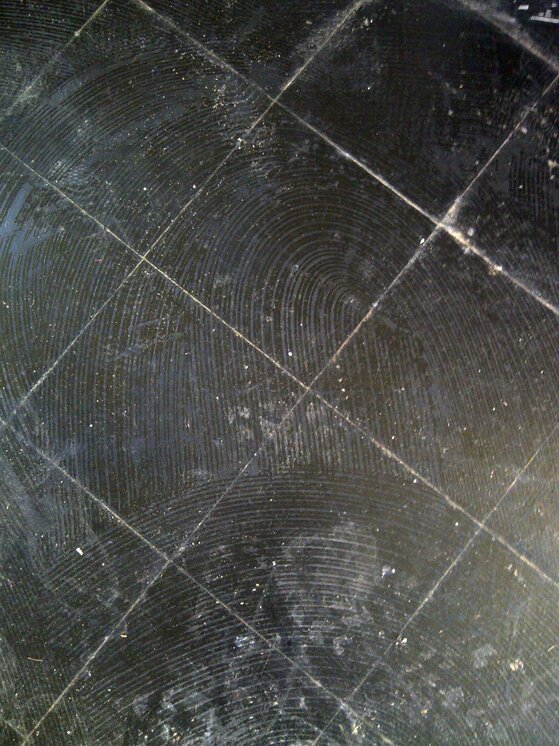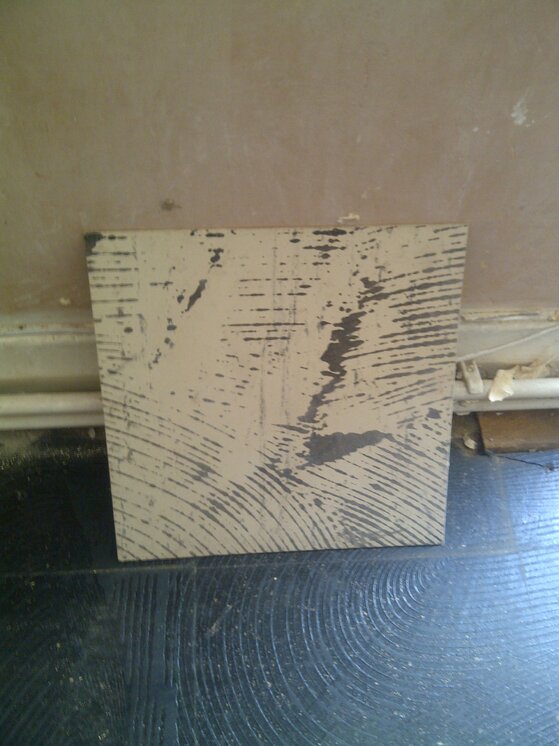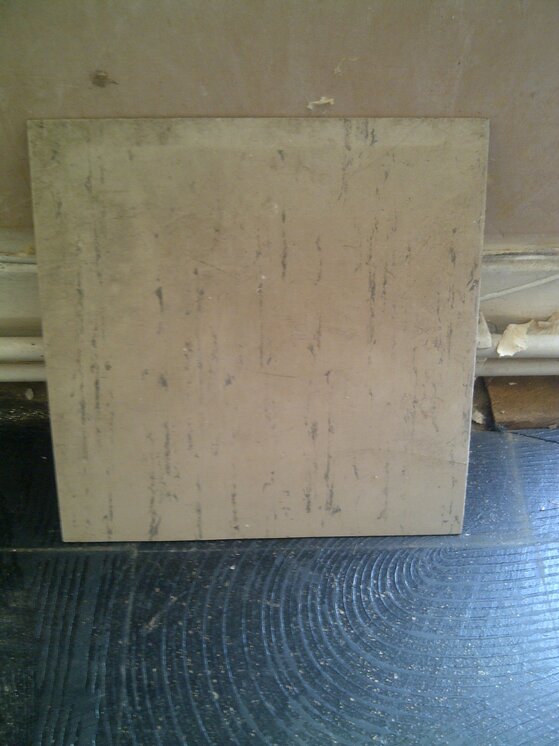T
Thomas Moore



Hi all. First time poster here so thanks in advance for any help you can give and apologies if I've missed the answer to my question when I've been reading through existing posts.
We've just started refurbing a 1950s ex-council house. We have removed a series of thin, 9" square tiles, which I now believe to be vinyl asbestos tiles, which I understand are common in houses of this type and age.
The tiles came up very easily and with no dust, leaving behind a fairly flat, reasonably uniform black substrate (see photos). This is solid and barely tacky but we're not sure yet how thick the black layer is.
After reviewing lots of advice on these forums (very useful), it seems to me that we probably have a concrete subfloor to which bitumen has been applied to fix the old tiles. A couple of the tile companies I've spoken to have advised that the bitumen is also most likely acting as the DPM. So, first question: does it sound like we're on the right lines so far in working out what we're dealing with?
The floor is generally solid and in decent condition with no break-up, although there is a section in the kitchen / diner where a wall has been removed, leaving a concrete 'finger' sticking out into the floor (approx. 8ft x 9"). The floor slopes by about 2" over 2ft where the two rooms were at slightly different levels before being knocked together and is a little uneven elsewhere, although there are no major dips, bumps or cracks.
I would like to avoid scraping up all the bitumen, especially if it's acting as the DPM but mainly because we're looking at a floor area of about 35sqm.
Ideally, I'd like to level the entire kitchen / diner floor with a self-levelling compound then lay ceramic / stone / porcelain tiles. My question is, what is the best way to prep the existing floor first?
It has been suggested that we just clean the floor of dust / loose material, leave the bitumen layer as it is and then prime it by rollering on ECO PrimGrip, followed by either FlexiLevel or Rapid Level 30 SLC then just tile using a normal adhesive. Does this sound like the best strategy or can anyone advise of a better way to tackle the job?
Thanks in advance,
Tom
Last edited by a moderator:
